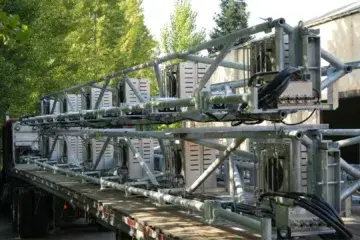When experts think of invasive carp, it seems to be predominantly a midwestern problem – but it now appears that the crisis is spreading, with invasive carp being found near Texoma Lake in Texas, and across the border in Oklahoma.
The focus of invasive carp mitigation in the Mississippi Basin is usually focused on the Mississippi, Ohio and Missouri Rivers, with current funding and trial plans to tackle invasive carp being focused on these areas.
In addition to funding, long-term planning is an essential part of tackling the problem and again, states further east, such as Kentucky, Tennessee, Ohio and Illinois all have long-term plans to tackle invasive carp. But there are other rivers in the Mississippi Basin and invasive carp are now being found in its western tributaries. The Arkansas, White and Red Rivers, traditionally seen as south-central rivers, form the southwestern part of the Mississippi basin.
The key to effectively managing the spread of invasive carp is to tackle the problem before the overall numbers of invasive carp become too great. The problem in the Arkansas, White and Red Rivers is seen as less serious, and because of this, they are less likely to be the focus of invasive carp funding.
Texas and Oklahoma Find Invasive Carp in their Waters
Invasive carp are now being found in the river systems of Texas and Oklahoma. including Choctaw Creek in Grayson County, and the Arkansas River in Oklahoma, and thankfully small steps are already being taken to mitigate the problem.
According to a recent report ‘Texas Parks and Wildlife Commission recently passed regulations that ban transporting any live nongame fish from Northeast Texas waters where they’ve been spotted, including the Sulphur River downstream of Lake Wright Patman and Big Cypress Bayou downstream of Lake O’ the Pines.’
Early Prevention Prevents Potential Disasters
Since the 70s and 80s there has been efforts to stop the spread and even though small measures were taken at the time, organisations such as the Great Lakes Restoration Project and the Tennessee Valley Authority are now having to spend hundreds of millions of dollars on helping prevent the now embedded invasive carp populations from doing more damage to their areas’ ecosystems. By treating the problem as a serious one now, and using the full weight of possible solutions, southern states such as Texas and Oklahoma will be able to go ‘early and hard’ when it comes to tackling invasive carp.
For more information on how Fish Guidance Systems are already helping states tackle invasive carp visit our mini-site or email [email protected].


